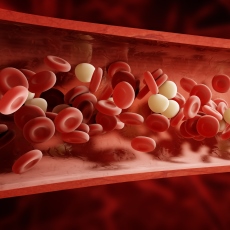
What is a blood clot?
A blood clot is a mass of blood that forms when platelets, proteins, and cells in the blood stick together. When you get hurt, your body forms a blood clot to stop the bleeding. After the bleeding stops and healing takes place, your body usually breaks down and removes the blood clot. But sometimes the blood clots form where they shouldn't, your body makes too many blood clots or abnormal blood clots, or the blood clots don't break down like they should. These blood clots can be dangerous and may cause other health problems.
Blood clots can form in, or travel to, the blood vessels in the limbs, lungs, brain, heart, and kidneys. The types of problems blood clots can cause will depend on where they are:
- Blood Clots (National Library of Medicine)What is a blood clot? A blood clot is a mass of blood that forms when platelets, proteins, and cells in the blood stick together. When you get hurt, your ...
- Pulmonary Embolism (National Library of Medicine)... a lung artery. It usually happens when a blood clot breaks loose and travels through the bloodstream to ... pulmonary embolism (PE)? The cause is usually a blood clot that breaks loose and travels through the bloodstream ...
- Deep Vein Thrombosis (National Library of Medicine)Deep vein thrombosis, or DVT, is a blood clot that forms in a vein deep in the body. Most deep vein clots occur in the lower leg or thigh. If the vein ... medicines and disorders that increase your risk for blood clots can also lead to DVTs. Common symptoms are : ...
- ... most common cause of the blockage is a blood clot . ... pulmonary embolus is most often caused by a blood clot that develops in a vein outside the lungs. ...
- ... DVT ). This is a condition in which a blood clot forms in a vein that is not on ... risk for long-term complications and problems with blood clots. Avoid letting the stockings become very tight or ...
- ... DVT) is a condition that occurs when a blood clot forms in a vein deep inside a part ... heart, or another area, leading to severe damage. Blood clots may form when something slows or changes the ...
- Renal vein thrombosis is a blood clot that develops in the vein that drains blood from the kidney. ... Symptoms may include: Blood clot to the lung Bloody urine Decreased urine output Flank pain or low back pain
- ... are used to check for blood clotting problems. Blood clots can cause health problems, such as: Deep vein ... dimer test if you are showing symptoms of blood clots, such as: Swelling, pain, warmth, and changes in ...
- Blood clots are clumps that occur when blood hardens from a liquid to a solid. A blood clot that forms inside one of your veins or ...
- Blood Thinners (National Library of Medicine)... blood thinners? Blood thinners are medicines that prevent blood clots from forming. They do not break up clots ... clots from getting bigger. It's important to treat blood clots, because clots in your blood vessels and heart ...



